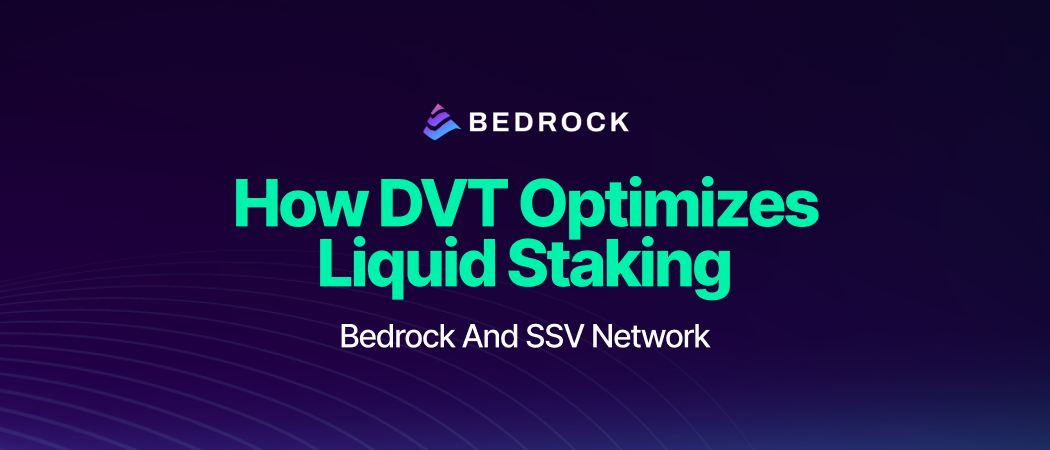Liquid staking on Ethereum is a process of staking funds in a decentralized manner to earn rewards. It is a form of incentivized participation in the Ethereum network, where stakers are rewarded for their commitment to keeping the network secure and operational. By design, a validator is required to deposit 32 Ether (ETH) to start attesting on the beacon chain. For many, this barrier is too high, causing them to forego participation in staking.
Liquid staking on Ethereum presents a solution in which the user deposits any amount of ETH in return for a receipt token. This receipt token accrues rewards over time either via rebasing, or simply by increasing in value. Unlike regular staked ETH, this receipt token is fully liquid and can be used in various decentralized finance (DeFi) applications, which makes it attractive to many users and investors alike.
In order for the receipt token of a liquid staking protocol to accrue value reliably, validators on the beacon chain, deposited by the accrued funds of users, need to remain online and perform their duties in a consistent manner.
Maintaining validators can sometimes be difficult to maintain at-scale, as many variables come into play when keeping a validator online. Some variables include software and hardware maintenance, geolocation, execution/consensus client bugs and upkeep. In a standard, non-DVT setup, if one of those variables becomes an issue, the validator is rendered offline and will start to accrue penalties, which will reflect on the receipt token.
Distributed Validator Technology (DVT) is a relatively new technology that can be used to fortify the liquid staking process. DVT adds more decentralization, and fault-tolerance, and lowers the risk of client bugs, thus enhancing security and decentralization on Ethereum. This way, DVT can improve liquid staking by making it more secure and stable.
The Lowdown on DVT
DVT stands for Distributed Validator Technology. It’s the technology that enables the splitting and distribution of validator keys and duties to trust-minimized nodes.
Whenever a validator onboards the beacon chain, it needs to perform duties in a consistent manner. This requires constant uptime to avoid penalties. By design, a validator is required to generate 1 key, which is kept online to attest to the state of the beacon chain. This, however, carries its own security risks. To mitigate this, DVT allows this key to be split and then shared across several node operators, thus eliminating a single point of failure.
SSV Network’s Role in DVT
SSV enables a validator to split its key into 4 ‘KeyShares’. It then distributes each share to a different node operator on the network, all while remaining non-custodial and secure.
Those operators then perform the duties on behalf of the user.
An upside of SSV is the ability to choose operators based on their proven performance, track record, client support, and more.
Additionally, SSV grants the staker with increased fault tolerance. This means that if a node operator goes down for any reason, the validator is still kept online. In contrast to traditional staking services, this maximizes uptime and thus maximises rewards greatly.
Having the choice to pick operators on the SSV network grants a wide array of configurations when it comes to staking.
For instance, institutions may choose operators located within certain jurisdictions, to be able to be fully compliant for their clientele. Additionally, they may only pick operators with a spotless track record when it comes to performance, as high-scale operations can deviate greatly if an operator is not performing their duties correctly.
How DVT Can Be Used in Liquid Staking
Essentially, DVT increases decentralization, which then reduces multiple risks associated with centralization. For instance, keys will not be stored in a centralized location, nor will servers operate from any single location, reducing the risk of a single point of failure. Following this line of thought, DVT can also improve validator efficiency by reducing the risk of downtime, and hence slashing.
The way DVT functions also makes it friendlier towards smaller validators or node operators. In SSV, you can form clusters, which are groups of operators that manage validators. By clustering smaller operators with more established ones, SSV’s DVT can create a healthy, decentralized environment that does not penalize newer or smaller players in the industry.
At the current stage, a cluster size ranging from 4 to 12 is possible. That means that 4 to 12 operators are responsible for submitting duties for that validator. The resilience and fault-tolerant aspect of SSV comes into play by the threshold needed to submit the duty. If the cluster size is 4, even if 1 operator goes down (¼), the validator would still be online. This aids in maximizing uptime, which as a result, maximizes the possible rewards received from the beacon chain.
This clustering also helps to reduce validator costs, as smaller operators can benefit from the resources of larger validators. As a result, SSV can provide a more efficient and secure network for all.
Embark on Liquid Staking With RockX and SSV
For all the aforementioned reasons, we are deeply honored to partner with SSV Network on DVT. We are thrilled at the prospect of integrating it with Bedrock, our proprietary liquid staking solution for institutions. The Bedrock platform will therefore be able to effectively maintain decentralization while incorporating institutions and high-net-worth individuals (HNWIs) into the DeFi ecosystem. With this approach, Bedrock could serve as a bridge between DeFi and CeFi, allowing the industry to benefit from innovations and vigor.
We invite you to join us in our mission to introduce Web3 to the mainstream. Together with SSV Network, we aim to make Ethereum more decentralized, more secure, and more inclusive than ever before.









